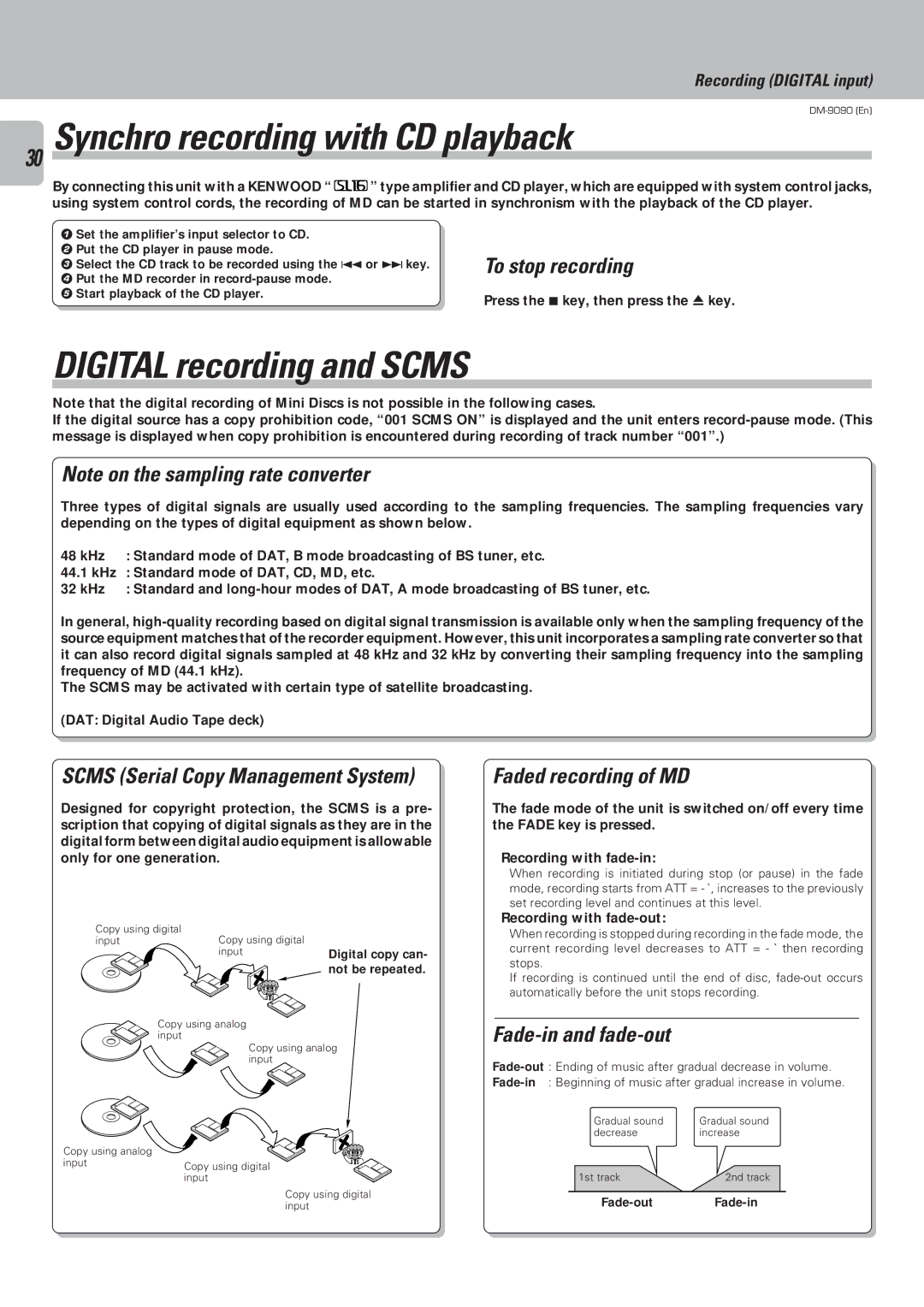
Recording (DIGITAL input)
30Synchro recording with CD playback
By connecting this unit with a KENWOOD “ ![]()
![]() ” type amplifier and CD player, which are equipped with system control jacks, using system control cords, the recording of MD can be started in synchronism with the playback of the CD player.
” type amplifier and CD player, which are equipped with system control jacks, using system control cords, the recording of MD can be started in synchronism with the playback of the CD player.
1Set the amplifier’s input selector to CD.
2 Put the CD player in pause mode.
3 Select the CD track to be recorded using the 4 or ¢ key. 4 Put the MD recorder in
5 Start playback of the CD player.
To stop recording
Press the 7 key, then press the 0 key.
DIGITAL recording and SCMS
Note that the digital recording of Mini Discs is not possible in the following cases.
If the digital source has a copy prohibition code, “001 SCMS ON” is displayed and the unit enters
Note on the sampling rate converter
Three types of digital signals are usually used according to the sampling frequencies. The sampling frequencies vary depending on the types of digital equipment as shown below.
48 kHz | : Standard mode of DAT, B mode broadcasting of BS tuner, etc. |
44.1 kHz | : Standard mode of DAT, CD, MD, etc. |
32 kHz | : Standard and |
In general,
The SCMS may be activated with certain type of satellite broadcasting.
(DAT: Digital Audio Tape deck)
SCMS (Serial Copy Management System)
Designed for copyright protection, the SCMS is a pre- scription that copying of digital signals as they are in the digital form between digital audio equipment is allowable only for one generation.
Copy using digital | Copy using digital |
|
input |
| |
| input | Digital copy can- |
|
| not be repeated. |
Copy using analog input
Copy using analog input
Copy using analog
inputCopy using digital input
Copy using digital input
Faded recording of MD
The fade mode of the unit is switched on/off every time the FADE key is pressed.
Recording with
When recording is initiated during stop (or pause) in the fade mode, recording starts from ATT = - `, increases to the previously set recording level and continues at this level.
Recording with fade-out:
When recording is stopped during recording in the fade mode, the current recording level decreases to ATT = - ` then recording stops.
If recording is continued until the end of disc,
Fade-in and fade-out
Gradual sound | Gradual sound |
decrease | increase |
1st track | 2nd track |
